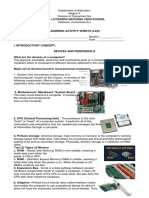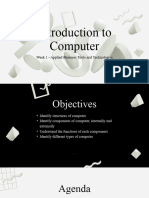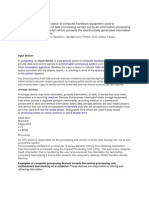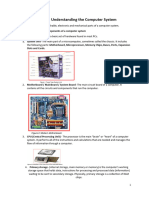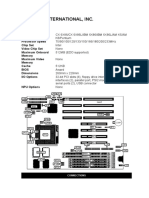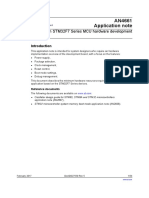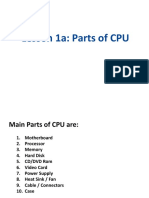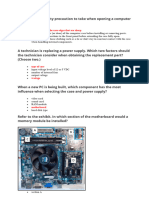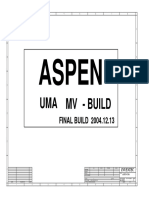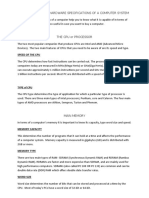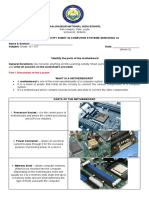0% found this document useful (0 votes)
5 views83 pagesBasic Hardware Components of Computer System
The document provides an overview of computer systems, detailing their hardware components, including input, output, processing, storage, and communication devices. It explains the roles of various components such as the CPU, RAM, and storage devices like HDDs and SSDs, as well as peripherals like keyboards, mice, and monitors. Additionally, it covers the importance of ports and connectors for device communication and concludes with a hands-on activity related to the computer process.
Uploaded by
Silver Estorco IIICopyright
© © All Rights Reserved
We take content rights seriously. If you suspect this is your content, claim it here.
Available Formats
Download as PPTX, PDF, TXT or read online on Scribd
0% found this document useful (0 votes)
5 views83 pagesBasic Hardware Components of Computer System
The document provides an overview of computer systems, detailing their hardware components, including input, output, processing, storage, and communication devices. It explains the roles of various components such as the CPU, RAM, and storage devices like HDDs and SSDs, as well as peripherals like keyboards, mice, and monitors. Additionally, it covers the importance of ports and connectors for device communication and concludes with a hands-on activity related to the computer process.
Uploaded by
Silver Estorco IIICopyright
© © All Rights Reserved
We take content rights seriously. If you suspect this is your content, claim it here.
Available Formats
Download as PPTX, PDF, TXT or read online on Scribd
/ 83



























